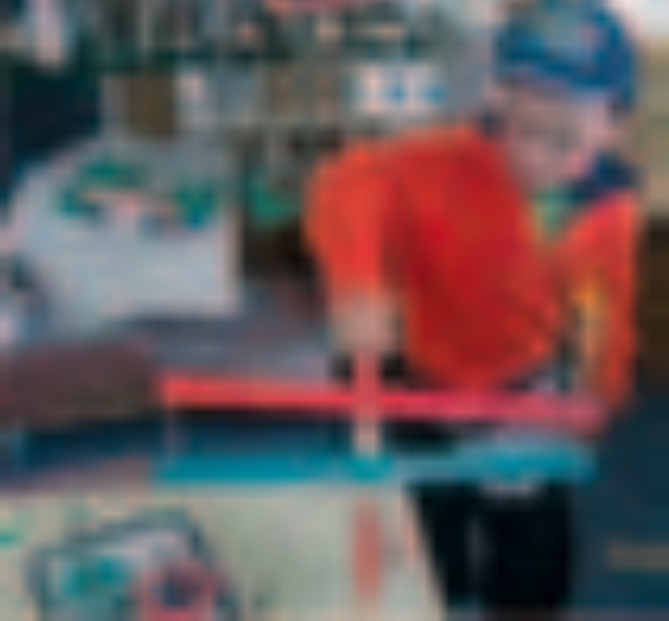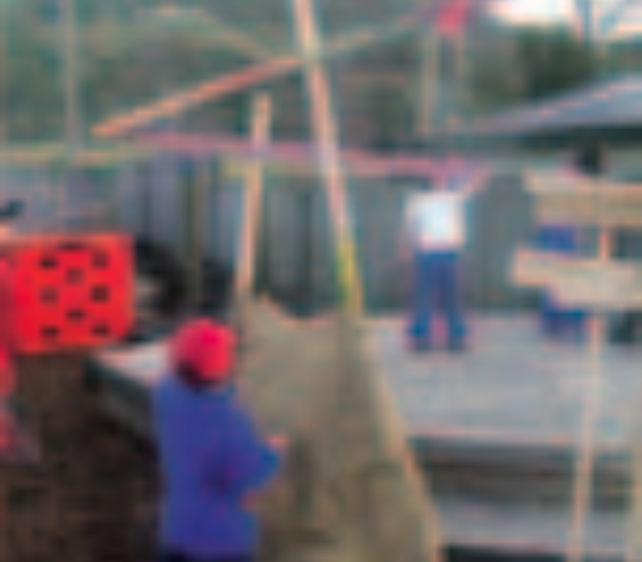Kei Tua o te Pae
Kei Tua o te Pae/Assessment for Learning: Early Childhood Exemplars is a best-practice guide that will help teachers continue to improve the quality of their teaching.
The exemplars are a series of books that will help teachers to understand and strengthen children's learning. It also shows how children, parents and whānau can contribute to this assessment and ongoing learning.
We are making improvements to our download-to-print functionality. So if you want a printed copy there are PDF versions available at the bottom of the main cover page.
Verbal communication skills for a range of purposes
-
Leo and te reo Māori
Child: Leo
Date: April
Teacher: Janine
A Learning Story
Today, at changing time, Leo put his legs up in the air. I said, “Tō waewae ki runga” then followed this sentence with “Tō waewae ki raro” (Put your legs down). Leo did not respond, so I gently pushed his legs down. I repeated, “Tō waewae ki runga” and he lifted his legs up, smiled and waited for the next command, “Tō waewae ki raro”, and down Leo’s legs went. Leo initiated this game later in the week and repeated the last two words of the sentence.
Short-term review
I was impressed with how quickly Leo picked up te reo Māori. Over the last 10 weeks I have observed Leo and his language in te reo Māori, which has been pronounced clearly and confidently. Ka pai Leo!
What next?
Encourage Leo’s understanding of te reo Māori.
Parent's voice
Child’s name: Leo
Date: May
Parent’s name: Andrea
We are very interested in Leo learning Māori language and culture and are pleased to see it being introduced at pre-school. We believe that learning another language at this age makes later language studies easier.
We live in a community that is racially and culturally mixed and Leo has already shown interest in kapa haka because of its relationship to music and dance.
We believe NZ, though becoming multicultural, is a country (traditionally and legally) centred around a dialogue taking place between Māori and Pākehā and that the language of people strongly illustrates the ideologies and ways of viewing/understanding the world by a culture. Understanding these different views allows Leo to begin to understand and be comfortable with difference.
Introducing Leo to Māori language and ideas at this age will help widen the options available to him to understand and position himself in the world and to understand there are different ways to do this.
-
Starting with photos
-
The logging industry: Conner shares his knowledge
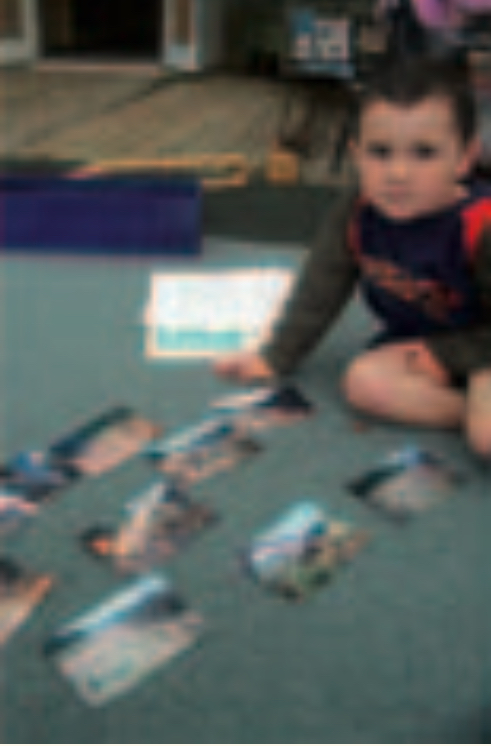
Connor brought some photos from home to share with his friends.
They were about his dad’s machinery that he uses when he works in the bush.
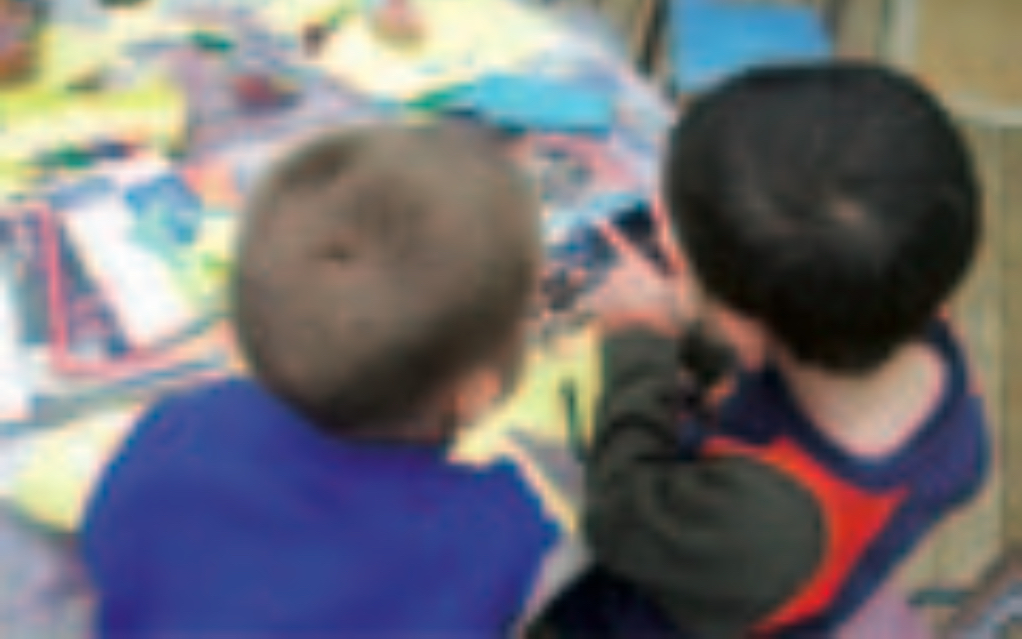
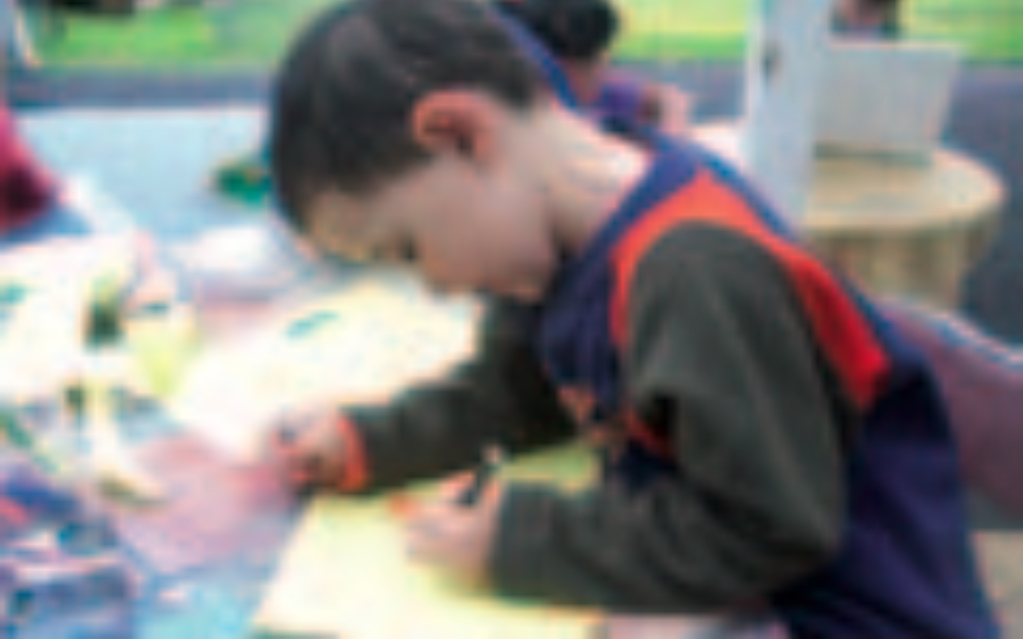
Connor showed the photos to his friend Daniel.
“This is a harvest line hauler. It pulls out logs off the hills into the skid. My daddy’s skidder pulls out logs from the bushes, too. It has chains or else it will get stuck in the mud.”
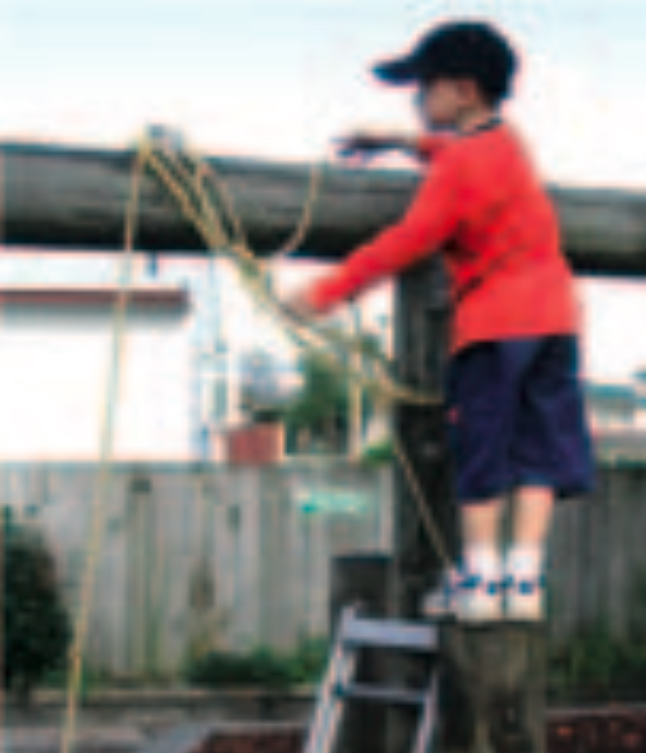
“They use waratahs in the bush and grapples and skidders. A waratah cuts the branches off trees – they have knives. I am making a crane to lift stuff up. They lift big trailers or a house that is about to be built.”
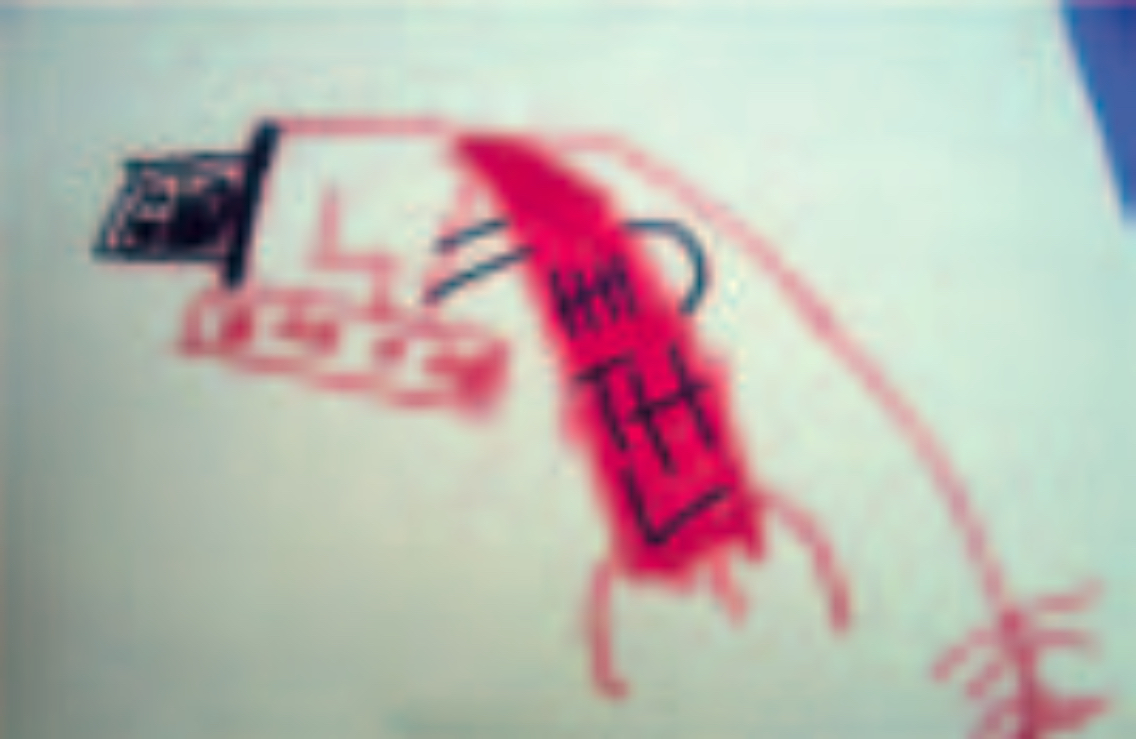
“They put logs on the stacks, then they go on the logging trucks. The bulldozer has a steel rope, which is heavy, to pull out logs. These letters on my harvest line hauler say ‘Ribbonwoods’.”
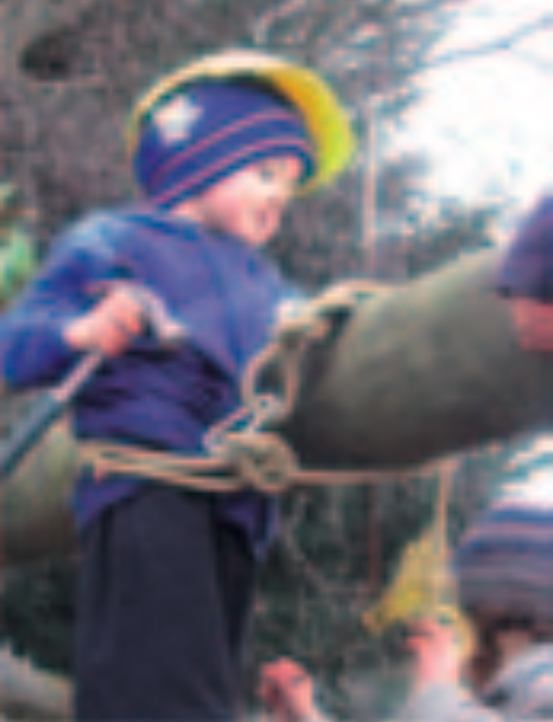
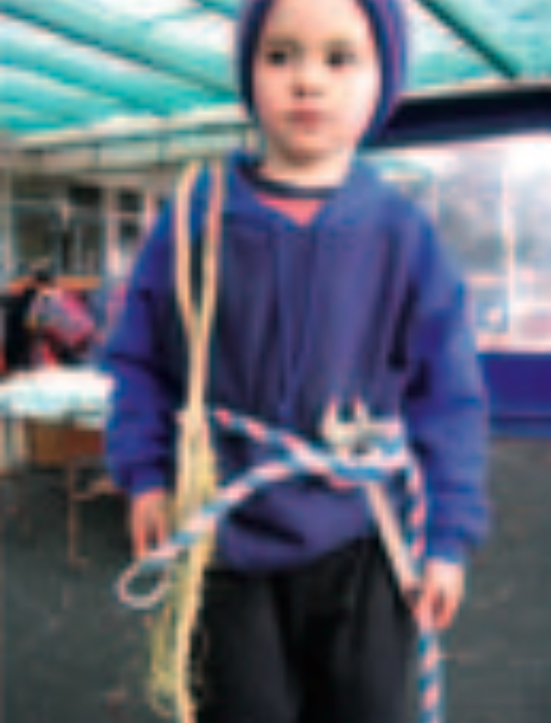
Today Connor changed the eye bolts on the swing frame as they were worn. With help from Barry he soon had his safety harness on and set to work. D shackles were in place, too, when he had finished 2 hours later. I heard Connor organising others and asking them “Where are those washers?” and “I need a nut to put on now.”
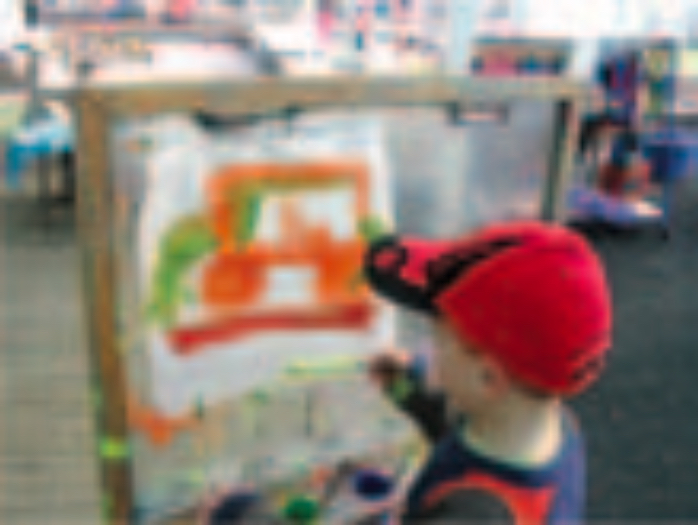
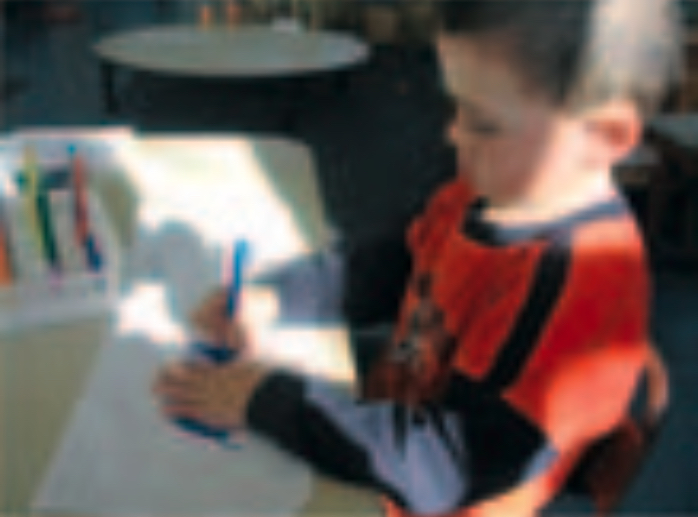
Connor often initiates working on his interests in different areas of the kindergarten and in different ways, through construction, artwork, pretend play or helping Barry to construct real physical challenges for the children, using ropes, pulleys and the climbing net.
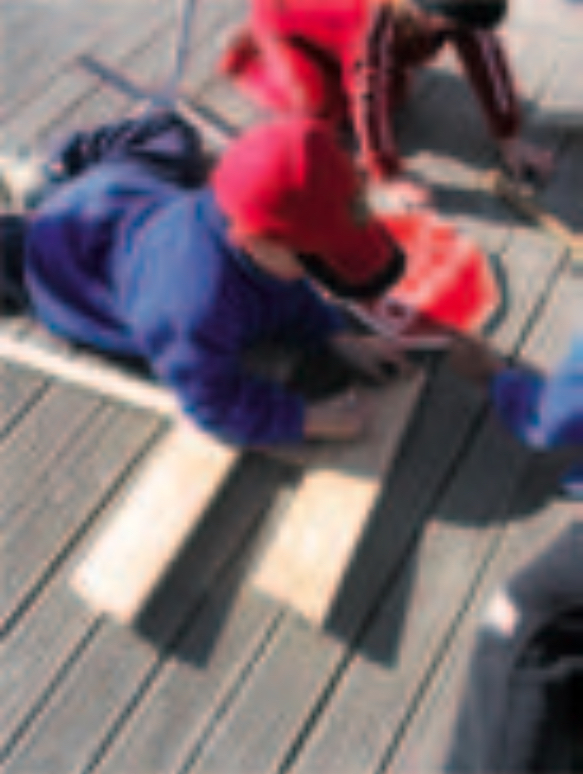
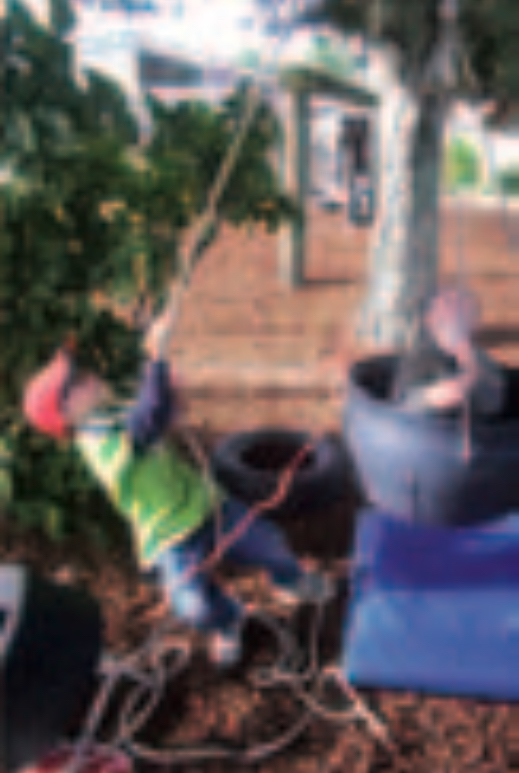
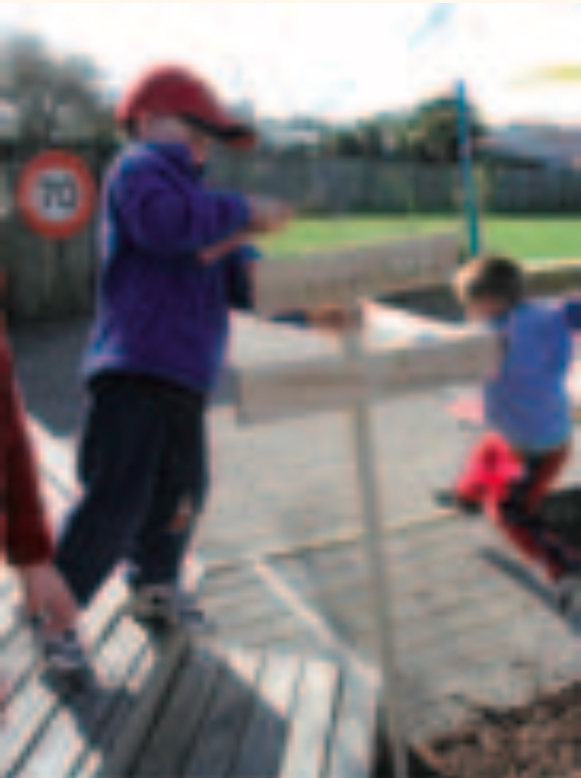
Connor made STOP signs, using long pieces of timber to construct them.
He wrote “STOP” on them, using another sign to copy the letters and made sure they were well hammered into the steps to complete his work.
Connor’s work has shown over a period of time that he has many learning dispositions, skills and attitudes, too, which make him a competent and a confident learner.
- He will persist with his task even when it becomes difficult.
- He experiments with resources, using them in many different ways.
- He sees himself as a resource for others.
- He asks adults and other children to help.
- He is able to direct others to get an outcome.
- He can express his ideas and feelings verbally.
- He can express his ideas through his work.
- Most importantly, Connor has the disposition to want to go on learning. He is so keen to achieve.
Links to Te Whāriki
I have linked Connor’s learning to the four guiding principles of Te Whāriki, which are the framework for the curriculum.
Empowerment/Whakamana
Our curriculum empowers Connor to learn and grow by focusing on his skills and interests and recording these in a way that enables Connor to see himself as a capable and competent learner.
Holistic Development/Kotahitanga
Our assessment of Connor’s learning sees Connor as a whole person. His responses and behaviour reflect respect, curiosity, trust, confidence, a sense of belonging, independence and responsibility.
Family and Community/Whānau Tangata
Connor’s family and the kindergarten form a two-way partnership in Connor’s learning.
Relationships/Ngā Hononga
Assessment of Connor’s learning reflects the responsive relationships between staff and Connor, the kindergarten as a place of learning and the resources provided.
-
-
Rahmat and the snakes
-
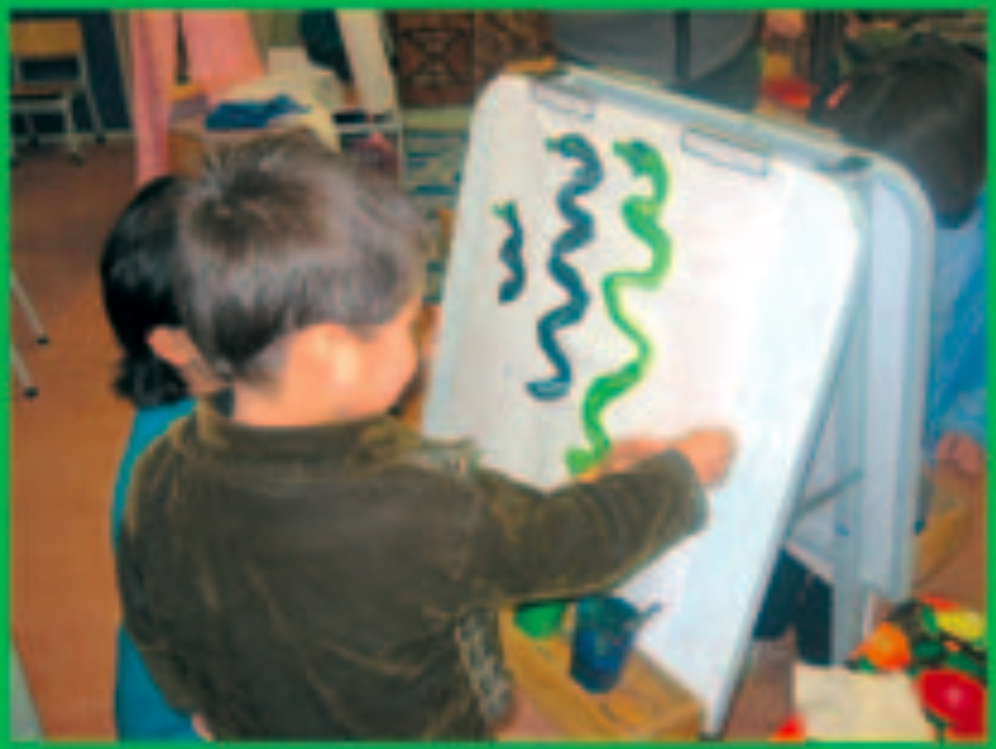
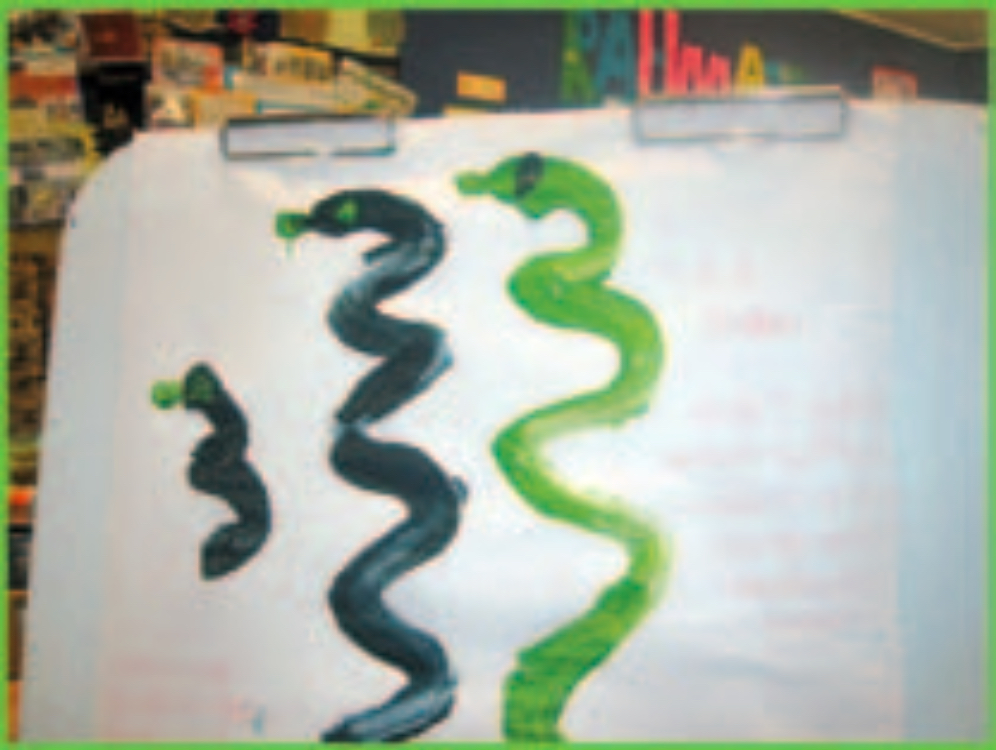
I noticed Rahmat was calling to me and gesturing for me to come over to his easel. He was painting on the far side of the easel and I couldn’t see his creation from where I was.
I went over. ”WOW! Snakes.” “All have tongues and eyes,” he said.
“Beautiful snakes,“ I said. “Do you have snakes in Afghanistan?” I asked. “Yes, and in Pakistan too.” I began to write about his snakes on the painting – my version.
Rahmat listened respectfully to me. I could sense he was not satisfied with my ideas. He called to Sadia. Sadia is a teacher from Afghanistan who speaks Dari, the same Afghani language as Rahmat. He had some discussion with her. She listened. She began to write his story in Dari as Rahmat dictated.
He asked her to explain to me. She then explained that Rahmat’s story goes like this:
The little snake ate lots of food and grew bigger, and then he ate lots and lots more food and he grew bigger still, and then he ate lots and lots and lots more food and he grew huge.
It is so fortunate that Rahmat can access Sadia and through her clarify his thinking for me. He wants me to know what he is thinking. He is not prepared to accept a watered-down version of his thoughts and he knows there is a way in this centre for that not to happen. I definitely had it wrong. Sorry, Rahmat. But you know how to teach me and graciously remind me that we are friends and that I am a learner. We belong to a community of learners.
Robyn. June.
-
-
Fuka, Colette and Fea part 1
-
Child: Fuka
Date: October
Teacher: Karen
A Learning Story
Belonging
Mana whenuaTaking an Interest What great excitement today. Fuka brought her hen to kindergarten.
I grabbed the video camera and began recording Fuka’s excitement and her friends’ excitement as she chased the hen around the kindergarten playground with her friends. As children arrived at kindergarten Fuka told them, “My chicken”, and then Fuka giggled and giggled and giggled, as did her dad when he was telling me about Fuka the hen.
I asked Fuka where she got her hen from and Fuka told me, “Car come to kindergarten.” Fuka’s dad then explained to me that Fuka’s hen brings Fuka to kindergarten every day! Usually the hen stays in the car but today Fuka decided to bring her hen into kindergarten.
I asked Fuka what her hen’s name was and she replied Fuka! I thought I had misunderstood her but her dad confirmed that indeed the hen was also called Fuka!
How exciting – we had Fuka the girl and Fuka the hen at kindergarten. Fuka the hen stayed for mat time and we gave her some birdseed but she didn’t eat it. Some children had a hold of Fuka’s hen and some patted her feathers. Fuka was in her element. She showed such delight, smiling from ear to ear as she shared her hen with her friends and teachers at kindergarten.
After mat time we waved goodbye to Fuka the hen and she went home with Fuka’s dad. We hope Fuka the hen can come and visit again another day!
We had such fun!
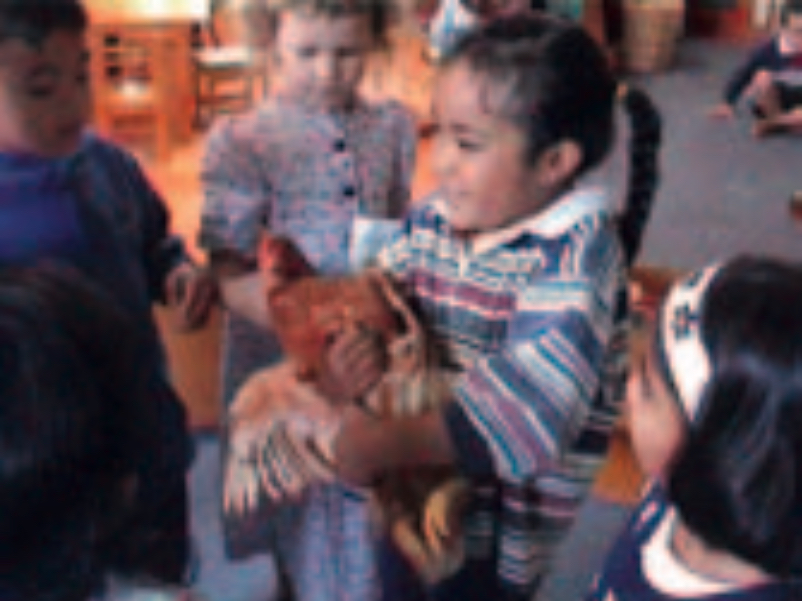
Well-being
Mana atuaBeing Involved Exploration
Mana aotūroaPersisting with Difficulty Communication
Mana reoExpressing an Idea or a Feeling Contribution
Mana tangataTaking Responsibility Short-term review
What a great surprise! Fuka’s hen visiting kindergarten.
Today Fuka took an active role in contributing to the programme. (Te Whāriki, Belonging, Goal 2.1)
Fuka has increased her own sense of belonging by sharing something that is important to her (her hen) with her friends and teachers. (Te Whāriki, Belonging, Goal 2.4)
It was magical to see Fuka’s excitement!
What next?
We recorded Fuka’s story into a book so she can revisit her experience and share it with her family. Fuka and her friends can record their thoughts about the hen’s visit.
Can Fuka the hen visit again?
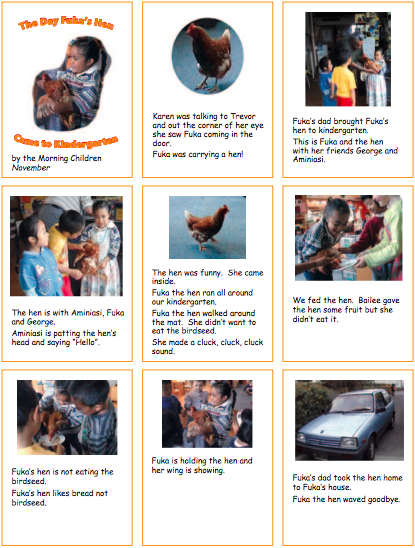
Child: Fuka
Date: October
Teacher: Karen
A Learning Story
The day after the visit from Fuka the hen!
Today Fuka bounced in the door and began talking about her hen Fuka.
“My chicken, car, kindergarten,” Fuka told me.
“Fuka, did your hen come with you to kindergarten in the car?” I asked.
“Yes, chicken come kindergarten,” replied Fuka.
At morning mat time Fuka joined in the discussion and brought up the topic about her hen. She shared her ideas with her friends again.
After mat time we watched the video footage of Fuka the hen’s visit and Fuka and some of her friends revisited yesterday’s experience. Once again, this was a great joy for Fuka and her excitement was contagious. Fuka enjoyed sharing her hen again with her friends and teachers.
Fuka and her friends took turns sharing their ideas and wrote a page each for Fuka’s book. Fuka watched as each page came off the printer and jumped up and down with delight! We made two copies, one for Fuka to take home and one for our kindergarten library.
Short-term review
It seems to me that Fuka now feels her friends and teachers share a common interest (her hen). This has given Fuka the confidence to talk and initiate conversation with her friends and teachers. Fuka has fostered her own sense of belonging and this has empowered her to join group discussions. English is an additional language for Fuka and it is fantastic to see her excitement when she shares her interest with us.
What next?
Continue to increase Fuka’s confidence and extend her verbal communication through her interest, Fuka the hen!
Fuka the hen to visit again!
Child: Colette
Date: December
Teacher: Jane
A Learning Story
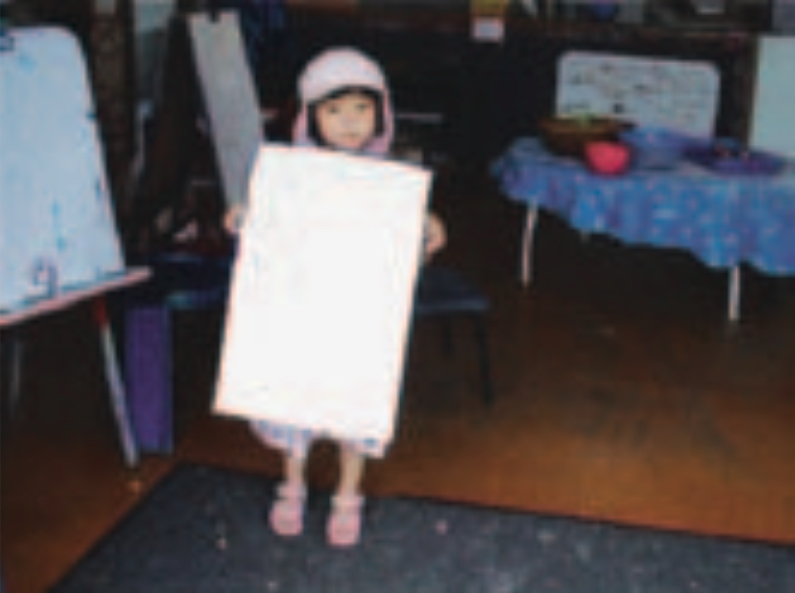
I had phoned Colette at her home the previous day. We spoke about various topics, one of which was about what Colette had been watching on television that day. Colette said that she had been watching Sesame Street and that she really liked that programme. I told her that I had some Sesame Street socks and that I would bring them the next day. I asked Colette if, when she came to the kindergarten the next day, she could remind me what I had to show her. Colette said that she would “remind me”.
The next day Colette and I approached each other and I asked her what it was that I was going to wear that day. Colette pointed at my feet. I wasn’t wearing any socks and I asked Colette if she could use her words and tell me. I said different words beginning with the letter ‘s’, except for the word “sock”. Colette shook her head each time I said the wrong word.
I asked Colette if she could tell me the word and then I would be able to show her the socks.
Colette then tried to “cough” the word out and I could see that she was really trying to say something. I suggested that perhaps she would like to come with me into the office where it was quieter and then she could tell me. She nodded.
We went into the office and I asked her to tell me what I had to wear. Colette very quietly said, “Yes.”
I put the socks on and asked Colette who she could see on them. “Ernie and Bert” she replied, this time in a louder voice. I gave her a choice of stamps to have. She asked for the “smiley faced one”.
I continued to ask her questions throughout the day, in a quiet area of the kindergarten, and Colette continued to talk to me.
The following day Colette brought her mum and dad in to show them “her talking to the teachers”.
Colette showed me her “sneaky voice” book and she told me that “I have beaten the sneaky voice and I will beat him again every day.”
Short-term review
It is “fantastic” to hear Colette talking to us at kindergarten. Some of the children have also remarked on her “talking”. They were very excited as were I and the other teachers.
Colette is quickly gaining confidence in having conversations with the teachers and talking to them about her artwork. She is also initiating the conversations, and has lots of things to talk about.
Well done, Colette, on “beating that sneaky voice”.
What next?
Encourage Colette to talk to the children as well as the teachers.
Give Colette the opportunity to talk at mat time – when she feels comfortable and confident enough to do this.
-
-
Fuka, Colette and Fea part 2
-
Child: Colette
Date: February
Teacher: Karen
Colette's duck house
A View from Each Side
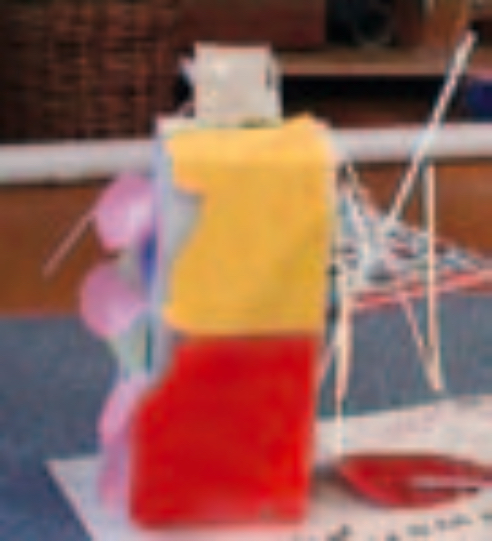
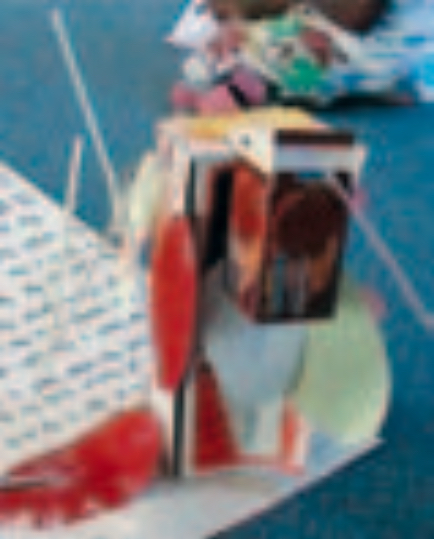
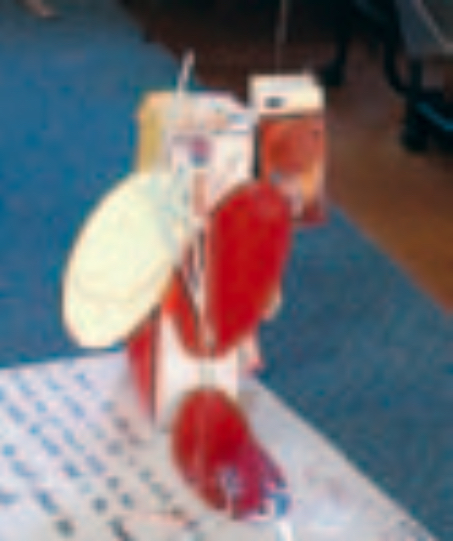
Short-term review
Today Colette worked independently on the task she set herself – creating a duck house. Colette shows great skill and confidence with the process of art and craft and often uses this medium to represent her ideas. (Te Whāriki, Communication, Goal 4.2)
Colette is very aware of the power of print and often requests that her stories be recorded. (Te Whāriki, Communication, Goal 3.2) Looking back over Colette’s past stories, it is clear to see the journey Colette has been working through. Colette is now confident to share her thoughts and stories with her teachers.
What next?
Support Colette on the next stage of her journey – to foster friendships and share her fantastic ideas with her friends at kindergarten. Next term we hope to have chickens hatch at kindergarten. This is an interest of Colette’s that may spark some sharing of ideas with her friends.
My house is the sticker part.
The ducks’ birthday is on April 9th. The ducks’ garden is under the gate.
The ducks have got treasure inside the box.
The straw inside the rubber band is the timer.
The rubber is the ducks’ shower box.
The ducks’ blanket is on the gate.
The 2 straws joined together make the ducks warm. You can’t see the big ducks. The big black duck and the big white duck.
The button is the blue window.
The purple feather is the window.
The straw is washing 1 duck.
The yellow ovals, the white ovals and the red ovals have baby ducks inside the eggs.
The gate is for the ducks to come in and go out.
My mum and me open the gate for them.
The strings are holding the eggs.
The box is the ducks’ roof. The straw is for moving the roof so the ducks can’t jump out.
The paper cups are the ducks’ beds.
Child: Colette
Date: February
Teacher: Karen
A learning story
Belonging
Mana whenuaTaking an Interest At the moment the children have a real passion for singing and dancing to the Vengaboys’ song “Shalala Lala”.
Today was no exception and the children were in full swing performing on a makeshift stage outside.
Colette was edging her way towards the group and looked as if she was keen to join in. I was handing out wooden blocks for microphones and offered one to Colette. Colette put her hand out for one. I then took her by the hand and slowly led her up to the stage.
I asked Colette if she would like to join the children on the stage and she nodded her head “Yes.” The children made room and Colette took her position on the stage and there she stayed for many songs, moving to the music.
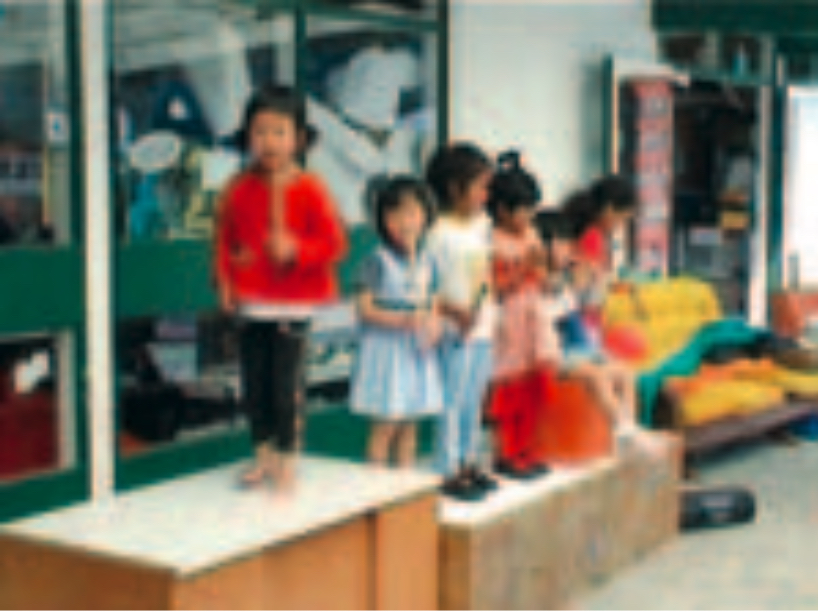
Well-being
Mana atuaBeing Involved Exploration
Mana aotūroaPersisting with Difficulty Communication
Mana reoExpressing an Idea or a Feeling Contribution
Mana tangataTaking Responsibility Short-term review
Colette is stepping outside her comfort zone. It is great to see her joining a group and becoming involved.
What next?
Continue to encourage Colette to join groups and establish friendships.
Teachers to ring Colette after each session and chat about her day on the phone.
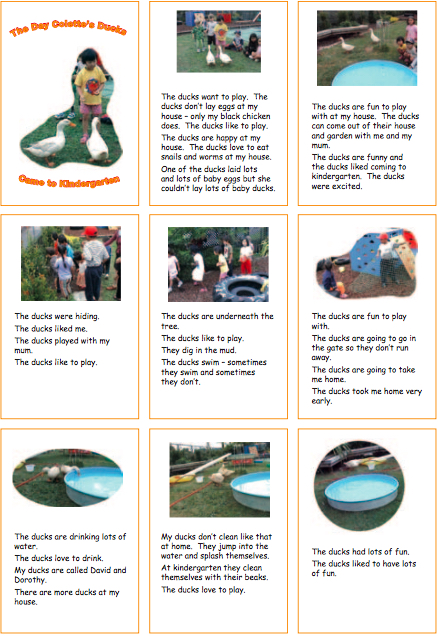
Child: Fea
Date: Term 4
Teacher: Karen
A learning story
Belonging
Mana whenuaTaking an Interest A couple of weeks ago Colette brought her two ducks to kindergarten for a visit. Colette’s ducks were called David and Dorothy and they stayed for the morning session.
Today Fea watched the video we had filmed of the duck visit and chose the photo for her story.
Fea told her story while I typed it on the computer. Fea used two and sometimes three words to tell her story. I put Fea’s words into a sentence and then read it back to her.
When Fea had finished her duck story she said “Fuka’s Hen”. Fuka’s hen had visited last year and the children had all contributed their stories to a book. While Fea was very involved with the visit, she hadn’t taken an active role in writing the book. Rather she had taken the role of an observer.
“Would you like to write your own hen story about Fuka’s hen’s visit?” I asked. “Yes,” Fea replied. Luckily we still had Fuka’s hen book on the computer and we were able to revisit it. When I opened the hen book document and Fea saw the pictures she said, “Just Fea.” I knew what Fea meant; she only wanted the pictures that she was in for her story. We found the pictures and Fea also chose a picture of the hen for her story.
We then began to record her hen story, Fea sometimes forming her own sentences and sometimes me role-modelling sentences back to her, using her words.
Fea was so pleased with herself that she sat by the computer waiting for each page to be printed out. She proudly put them in her file, and for the rest of the morning walked around with her file clutched under her arm.
Well-being
Mana atuaBeing Involved Exploration
Mana aotūroaPersisting with Difficulty Communication
Mana reoExpressing an Idea or a Feeling Contribution
Mana tangataTaking Responsibility Short-term review
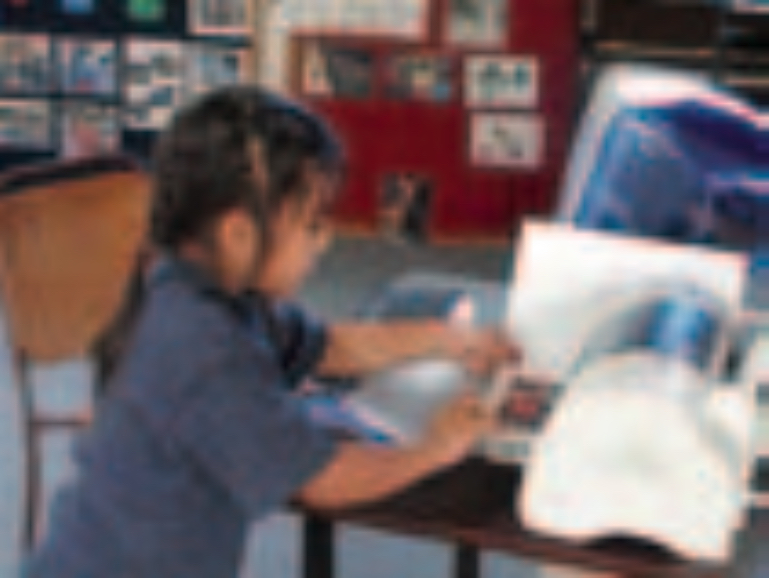
Today Fea took control of her own learning, set her own task and became fully involved in the kindergarten programme (Te Whāriki, Belonging, 2.1). Fea asked for the opportunity to revisit something she previously didn’t have the confidence to be involved in – writing Fuka’s hen book. She now has the confidence to express her own ideas and thoughts and knows these can be recorded to form a story.
What next?
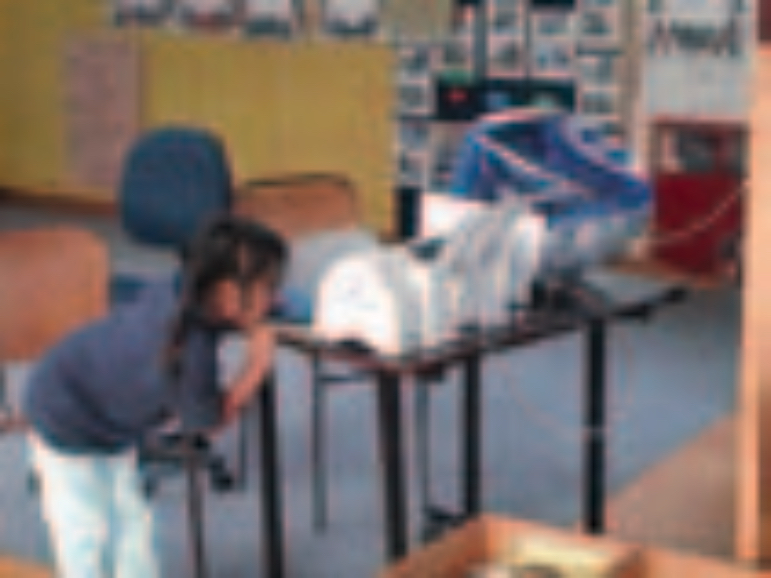
Continue to build on Fea’s previous What next? Record Fea’s stories! Encourage Fea to share her stories with her friends at mat time, further developing Fea’s confidence in her own ability. Read, read, read stories to Fea in Tongan and English, creating discussion about the story and pictures.
We have Tongan books at kindergarten that Fea can take home and share with her family.
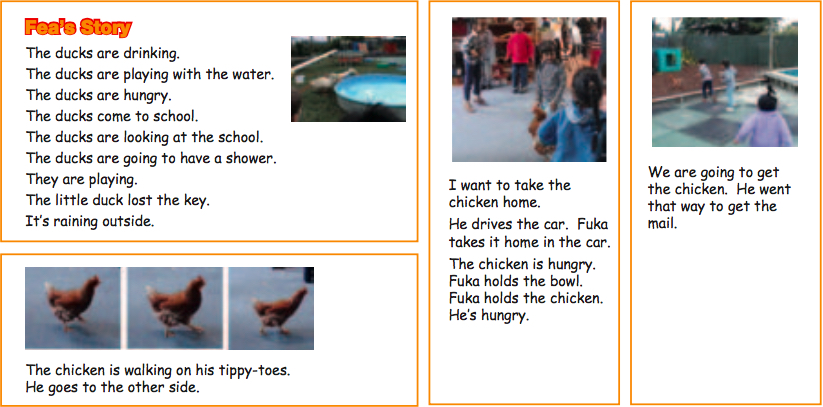
-

